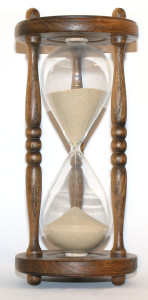
How long will it take?
How long will it take…That is the question.
How long will it take to lose weight? To fit into my favourite pair of jeans?
How long will it take to build muscle? To get lean and ripped? To see a six pack?
How long will it take for my injury to heal? To get back to sports? To doing the things I love to do?
How long will it take to get fit? To get healthy? To have more energy and stamina?
While the end results of all of these questions may be a little different from each other, with some focusing on changing physiques, other dealing with injury rehabilitation and some primarily focused on general health and wellbeing, all of these questions are really asking one thing:
“How long will it take before I see changes?”
If we were to base our expectations on the headlines often seen on the covers of any of the health, fitness or fashion magazines that we’re constantly bombarded with, the answer lies somewhere between 10 days and 12 weeks.
We read about celebrities and their fad diets and intensive training regimens dropping 10 lbs in 10 days, or bulking up and adding massive slabs of muscles to their frames for their upcoming superhero roles in just 12 short weeks.
We see athletes with seemingly unsurmountable injuries return to play in what appears to be just mere weeks or months after major surgical repairs and broken bones.
And then we believe that’s what the norm is. We believe that those types of results are typical. That those types of results are the expectation.
We use those media published stories as the foundation of our own barometer of success.
Have I lost weight fast enough?
Have I put on muscle fast enough?
Have I come back to sport soon enough?
And then sadly, we are disappointed when our reality sets in and we haven’t achieved those lofty goals in the desired timeframe.
The scale has hardly budged. Our injury hasn’t healed.
So what’s missing?
Why didn’t our reality match the other reality?
Why weren’t we able to do what “they” did?
One thing: context.
For those actors and celebrities transforming their bodies, their work opportunities (and corresponding paycheques) often depend on their physical appearance. The roles they’re cast in may require a certain look or physique such as Christian Bale’s extreme and drastic transformations from The Machinist to The Dark Knight.
The same broad scenario applies to the high performance and professional athletes, whose finely-tuned bodies are the tools of their trade. The performance of their bodies dictates their salaries and endorsements. It has very real and tangible impacts on their livelihoods.
For them, they now have the drivers (both internal and external) to push them to allocate the resources (or find the resources) to achieve these targets.
They have teams of highly skilled and trained people at their disposal.
They can hire the elite physiotherapists, personal chefs, sports nutritionists, and specialized personal trainers to craft structured programs. They have the time and resources to allocate to go to work – in this case, changing their bodies, building their bodies or healing them.
For them, their body is their job.
For those of us not in that context, we have matters that may take greater precedence. Like young kids or aging parents. Like our jobs and careers, the means by which we pay for life. Like our housework and chores. Our day to day tasks.
By the time these pressing daily items are dealt with, we often don’t have the eight or nine hours left in the day to sleep and recover. We don’t have the two, three or more hours a day to lift weights, do cardio or rehab. Our meals are often grabbed on the go, instead of being homemade, perfectly balanced, and fully nutritious.
Our context, when put in perspective against these media marketed norms, is very, very different.
So how long will it take?
As always, the honest answer is it depends.
It depends on our context.
It depends on what resources we can invest into our results – how much time, money, effort and energy we have to spare.
What we’re willing to sacrifice.
So while these media based standards of transformation and rehab seem unattainable, that’s not to say that we can’t make change happen. We can. Our bodies are capable of incredible feats, if given the opportunities and means.
We just have to figure out what we’re willing, and able, to put in.
From there, we can then figure out how long it will take.
And looking honestly at our context, it may just take longer.

(inside Peak Performance Golf)